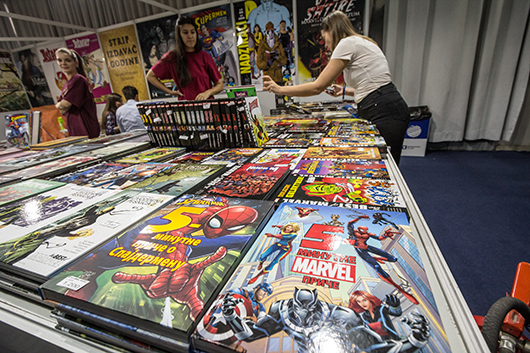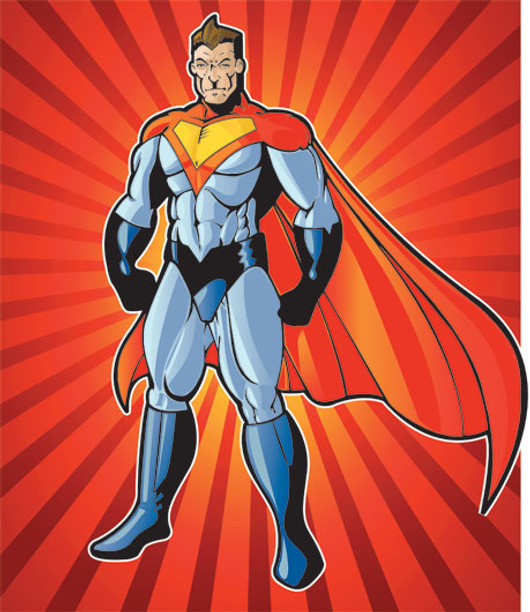How To Make a Comic Book, Design, Characters, and Cover - An Overview
July 10, 2020
Many people think that creating a graphic novel is comparable to writing a book, but this is not so. These two endeavors share many of the same qualities and concerns, such as maintaining a sense of conflict and a theme throughout, but they are ultimately dissimilar.
The characters, design, and cover of your graphic novel are the three most important aspects. To produce quality, imaginative output, consider your strengths and weaknesses as a comic book creator along with the basics of graphic design.
Here are some more details on each of these categories.
Pick a Theme and Stick to It
Sometimes, the idea for your graphic novel will unfold easily when your main character appears in your mind fully formed, and sometimes it will stem from a scene or setting you dreamed of the night before. There's no wrong way to get a good idea.
Your idea will grow in complexity as you contemplate it. As you work through plot points and character development, consider the theme emerging from your story.
The theme is the ambiance of your story, and it can be anything from playful to macabre to film noir. It will bleed into every aspect of the comic book; the coloring choices, lettering, and sound effects all will reflect your theme in some way.
Matching your content and your theme will most likely be a natural choice. If you're writing about a vampire haunting the ruins of a castle, you probably won't choose candy pink and pastel colors to reflect this dark theme.
It doesn't matter which theme you choose, what matters is that you consistently stick with the theme throughout the graphic novel. Having to go back and fix errors or inconsistencies in your theme will slow down your production, costing you time and effort.
Once you've pinned down your theme and the significant elements of your story, it's time to meet your main character.
Have Only One Main Character
Most narratives, whether they're a spoken-aloud tale or a flash poem online, have a single main character who could be the subject or narrator of the story. Even if you choose to write from a third-person, omniscient point of view, your plot will likely follow a single protagonist.
Finding your character is the simple part about the characterization process; the hard part comes next when you have to set about getting to know your main character. Because this is a graphic novel, you’ll need to know what the character looks like, acts like, and thinks about.
You’ll have to make lots of sketches of your main character in various scenarios. If you have the time and ability, you may even want to build a 3D model of your character to manipulate it into different poses physically. This can help you sketch your main character in any scenario you need, from climbing an icy cliff to hiding in a tunnel.
If you don't want to make a 3D model, put together a turnaround model sheet, featuring your character from an array of angles and doing all sorts of things – grimacing, sneezing, or falling asleep with their mouth open.
If you've read a lot of graphic novels (and if you're thinking about writing one, you probably have), you notice immediately when the protagonist looks off or not right. To get your character down pat, you have to know them. This is a skill that takes practice, so draw your character over and over again.
Much like the theme of your graphic novel, there are some perspective guidelines that you should follow. Fantastic, mind-bending events might occur in your plot, but understanding how gravity affects objects or how the horizon curves slightly can make your comic more realistic and believable.
Even the most modern artists still adhere to some fundamental rules to ensure their images make sense. In this same manner, adopt some stylistic guidelines for your comic.
Essentially, you're both a book-writer and an artist, a book artist, if you like. To be a successful book artist, you have to know what your character might say in any given moment, and you also have to know how they look when they're saying it.
Now that you have a theme, a plot, and the main character, you're almost done creating your comic book. But you still need to create a comic book cover.
A Good Cover Attracts Readers
One of the crucial parts of any comic book is its cover. Designing a comic book cover takes some graphic design know-how and serious consideration. Your cover design is the first thing that your potential readers see; it piques their attention and hopefully makes them open their wallets to buy your comic book.
If you haven't already picked out a name for your comic book, you'll need something to put on the cover. The title may be your main character's name, but it also could be something unrelated. Start by drawing the name at the top of the page, and then evaluate the length and how easy it is to read. Once you've got your title set, move on to the images.
Many comic book aficionados advise always putting your main character on the front of your comic book, and this is sound advice. You need to relate as much of your story as you can to your readers in a fairly small space. By putting your main character front and center, you let your reader know whose story they'll be following.
Your cover design should also give something away about the story within. A great way to think about it is to define what you think the climax of your story is. This is the point in which the protagonist succeeds in slaying the dragon or besting the evil queen. Think about the characteristics of that moment to help you craft a compelling cover design.
Of course, you don't want to give too much away. A favored choice of many comic book covers is to depict the moment of most peril, right before the protagonist succeeds in his or her quest.
If you're not doing all your drawings yourself, retain the same artist who drew the inside panels for the outside cover. That way, you can achieve a seamless style throughout the entire graphic novel.

Choose the Right Publisher
If you don't already have one lined up, choosing the right publisher for your creative venture is almost as important as deciding on your main character's name and motivation.
A comic book publisher worth its salt should have experience, provide guidance, and be able to offer multiple printing options at fair prices. Your choice of gloss levels and size will impact the final appearance of your graphic novel, and you should also have options regarding the number of copies in your first printing run.
Each of these printing decisions will make your comic look and read differently, so it's helpful to have someone who knows what they're doing lead the way.
The Last Word
Imagination is one of humankind's greatest assets. It's mind-boggling that some of us can create whole worlds from one simple idea.
It's not just about getting the idea; there is a ton of work and collaboration involved in transforming an idea into a lovely, glossy, finished comic book. Communication skills are some of the most useful traits for comic book authors. If you're not planning on flying solo throughout the process of writing the comic book script, drawing it out, inking and coloring, and lettering your comic book, you're going to need some help.
Comix Well Spring can help you bring the seed of an idea into bloom. We are experienced and offer guidance and options when you want to bring the next great idea to fruition.

